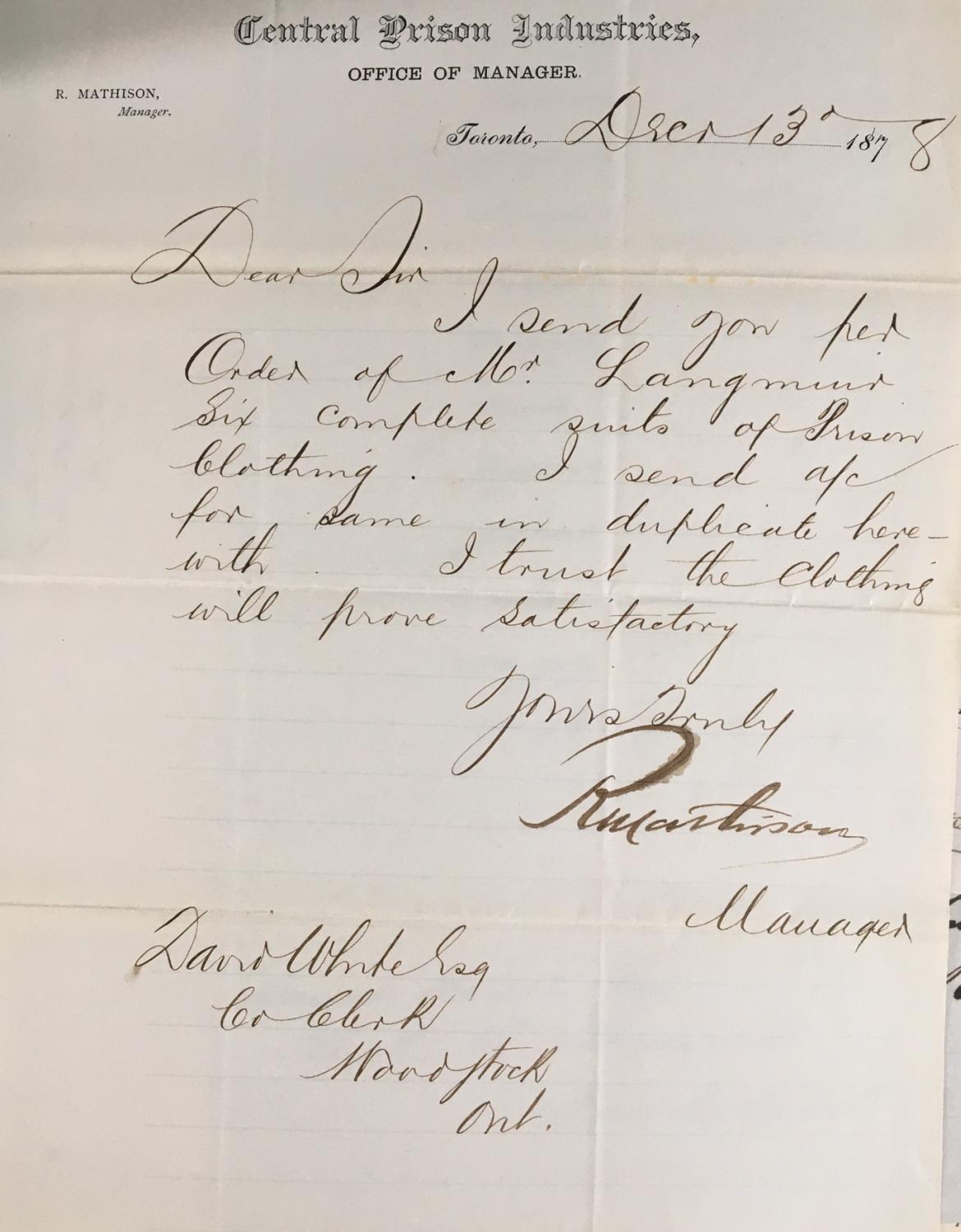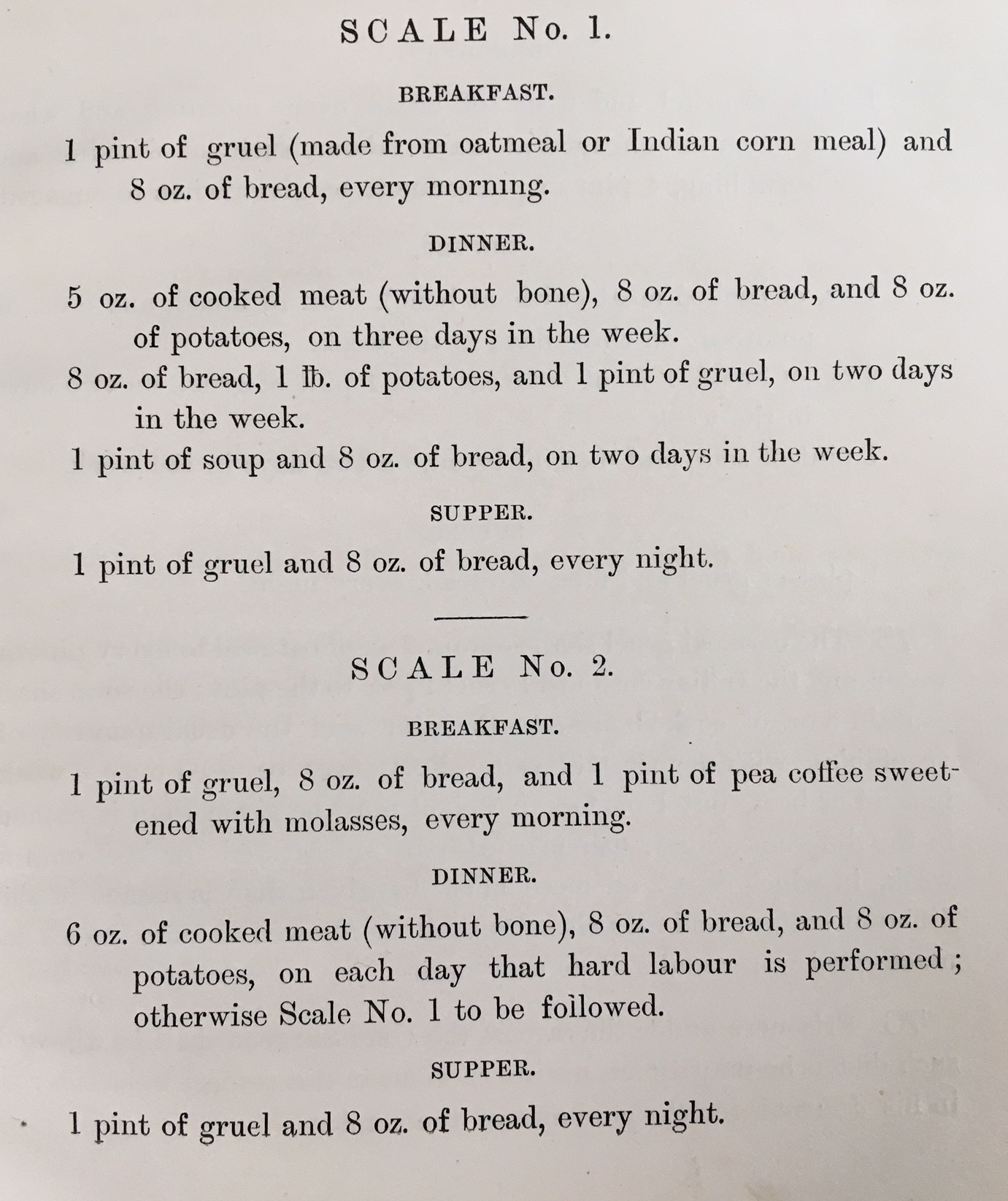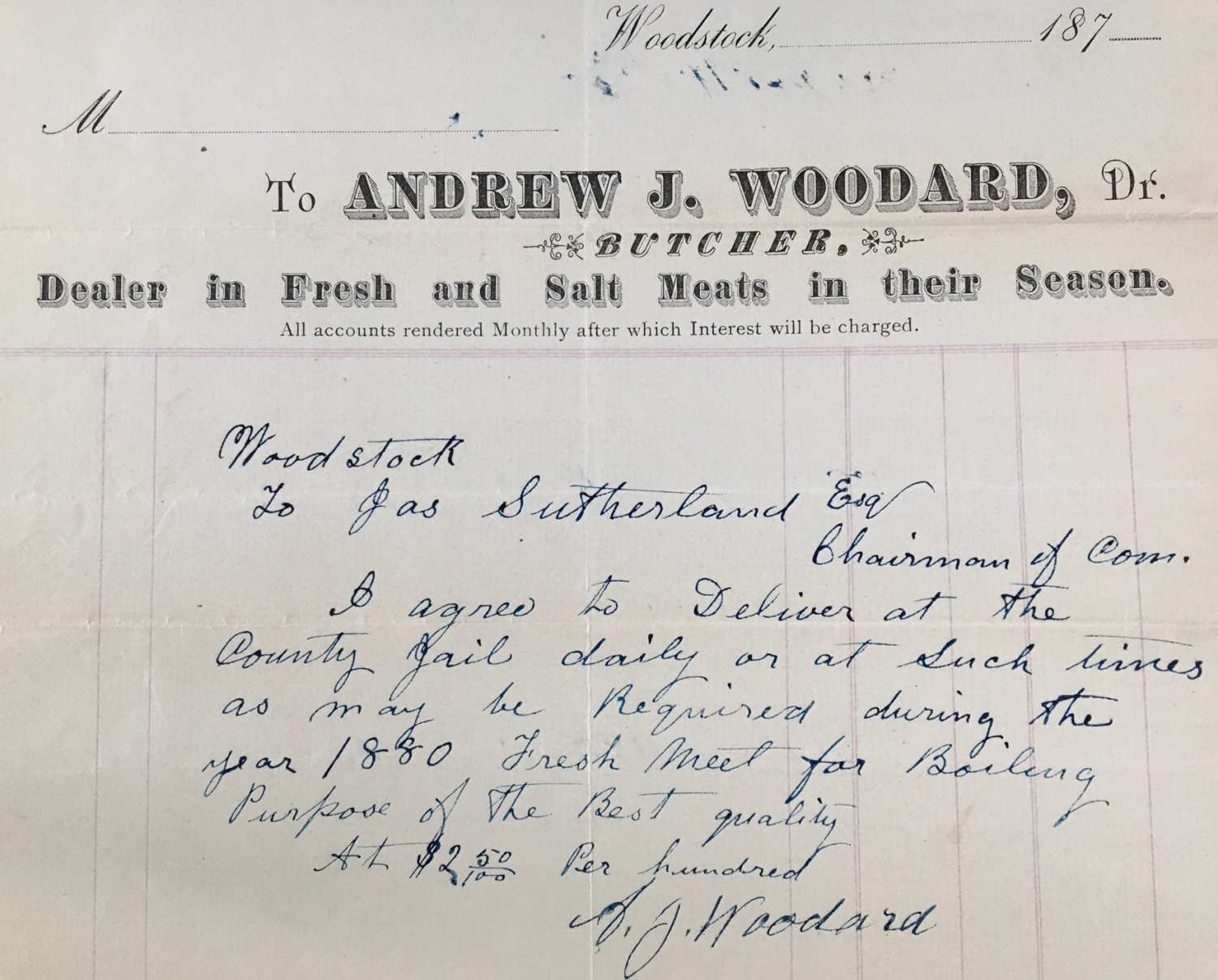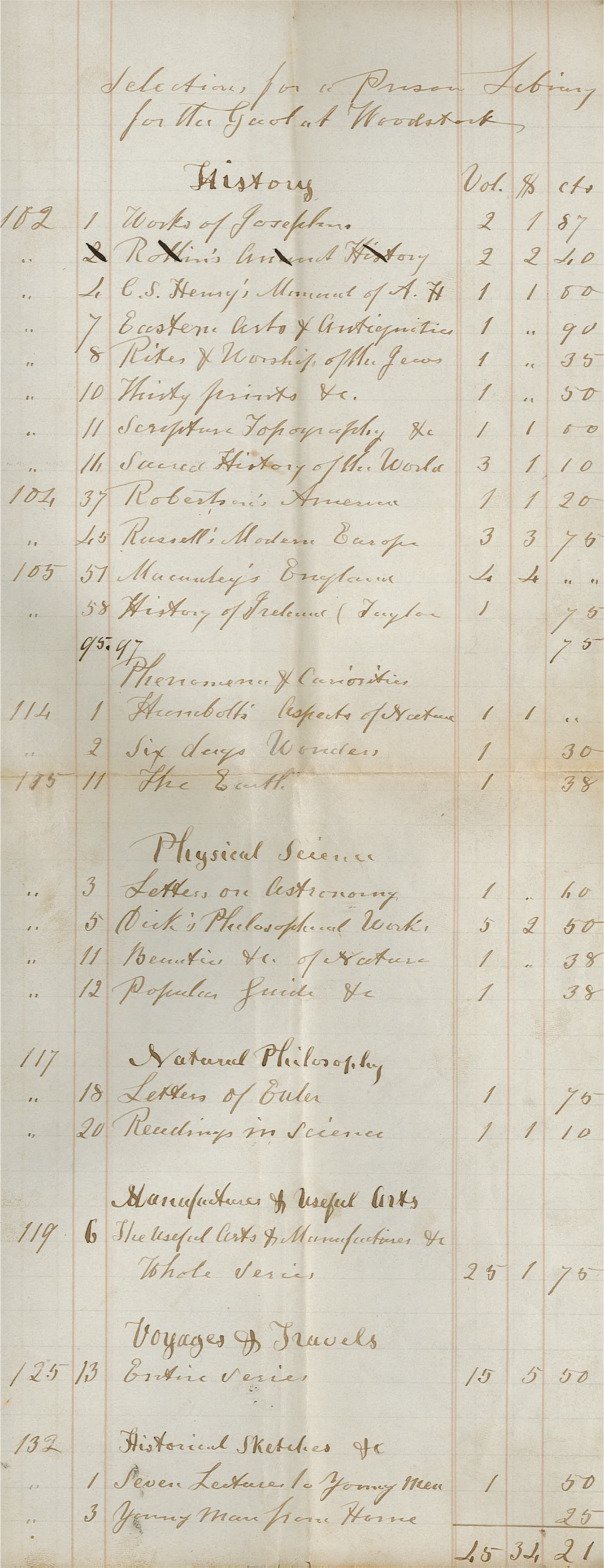Life as an Inmate
Once prisoners were admitted to the Gaol, they were processed, bathed, and given uniform prison garb. A male prisoner’s uniform consisted of a tunic, trousers, cap, a pair of brogans (an ankle high work shoe) and such underclothing as the season required. A women’s uniform consisted of an over-dress and under-skirt, a pair of shoes and underclothing. The colour of the uniform was as prescribed by the inspector. All male prisoners were to have their hair cut upon admittance for the purposes of health and cleanliness. On the other hand, a female prisoner’s hair could not be cut without her consent, unless ordered by the Gaol Surgeon on the grounds of health reasons, or on account of vermin (like lice) or extreme dirt.
Ideally, each prisoner was to have his or her own cell that included a bedstead, a pillow filled with clean straw, blankets, a piggin (wooden pail) of water, a night pail (ie. bed pan), a towel, a comb and a piece of soap. However, with overcrowding this wasn’t usually the case. In fact, before the House of Refuge was built, the Gaol was often used as a temporary place of shelter for the destitute. As such, the number of inmates tended to increase once the weather got colder. Often this would include entire families. In 1857 a drunk man, unable to afford a three dollar fine, was imprisoned in the Gaol for two days, along with his wife and three small children
Prior to indoor plumbing prisoners were expected to use the privies in the gaol yard, whenever possible, rather than the water closets inside the building. It was up to the Gaoler to see that absolute cleanliness was observed in all the privies and water closets and that they were kept constantly flushed with an abundant supply of water.
Prisoners were required to keep their cell clean and orderly. However, prisoners sentenced to hard labour were required to also scrub and clean the corridors and maintain the jail yards. Under the supervision of the Chief Turnkey and Matron, prisoners also did the cooking of the food and washing of clothes and bedding.
No drinking or smoking was allowed within the Gaol walls unless specially ordered by the Gaol Surgeon. Prisoners were allowed to exercise in the yard and were permitted to send and receive letters. They were also allowed to read within the prescribed hours, as long as the books were approved by Gaol staff.
Before 1900, the meals were divided into three different menus based on whether you were either an adult male awaiting trial or under sentence of hard labour for less than 30 days; an adult prisoner sentenced with hard labour for over 30 days, with the labour consisting of cutting wood or breaking stones; or a woman or boy under fourteen years of age. The menus were pretty basic and consisted mostly of gruel, bread, cooked meat (beef and sometimes pork), soup and potatoes, though in some instances inmates were allowed coffee sweetened with molasses. By the 1960s, prisoners had a menu consisting of ten different meal plans to choose from and included items such as puffed wheat, wieners, pudding and a variety of vegetables.





